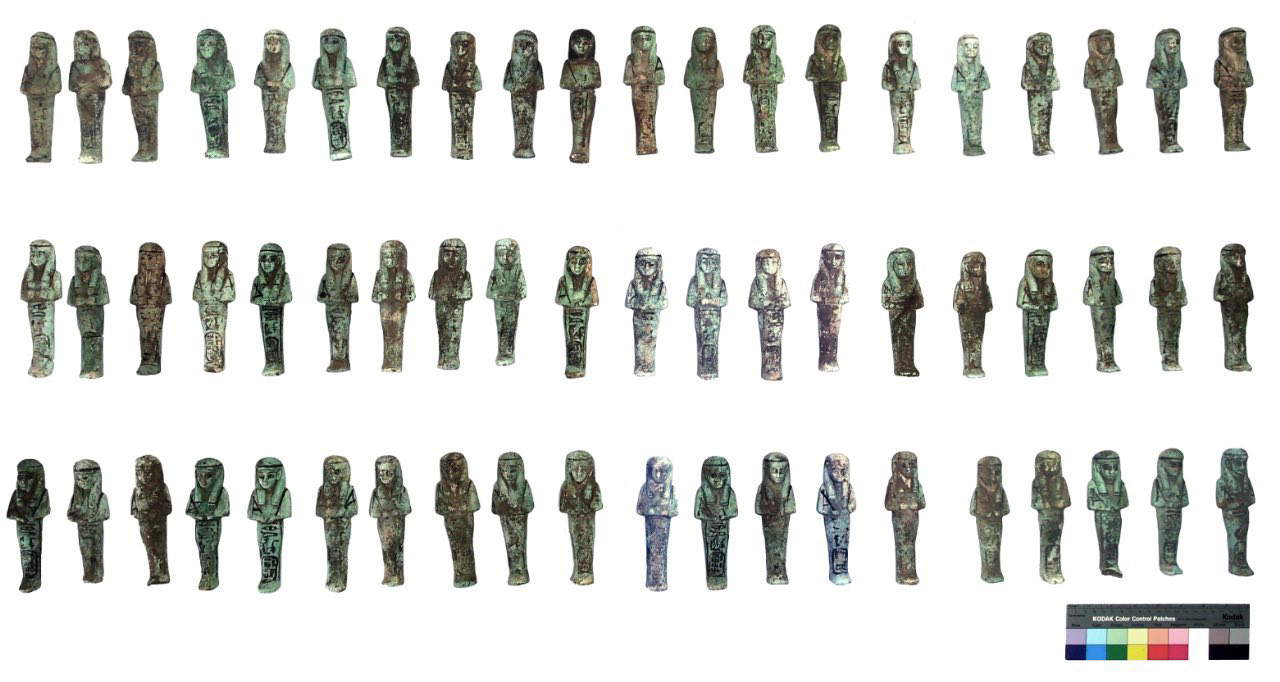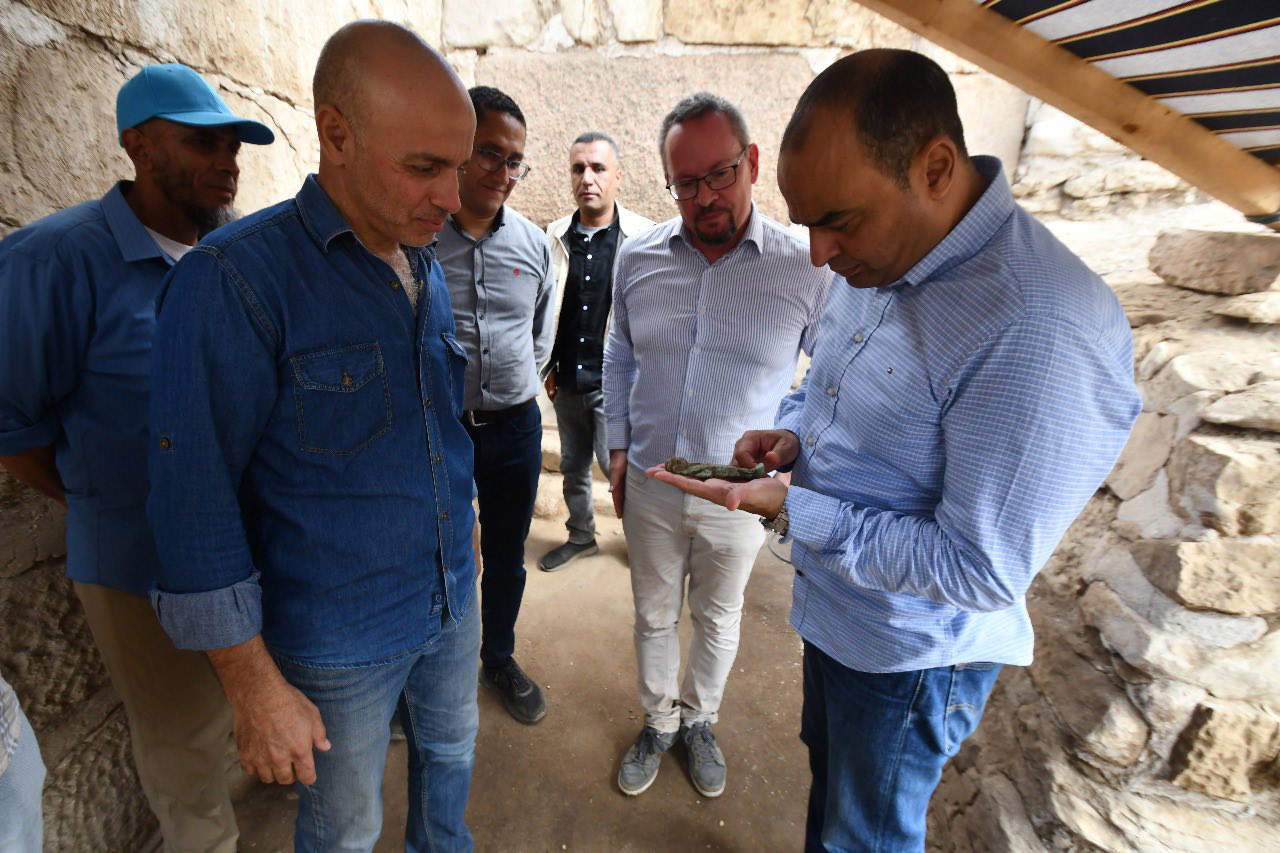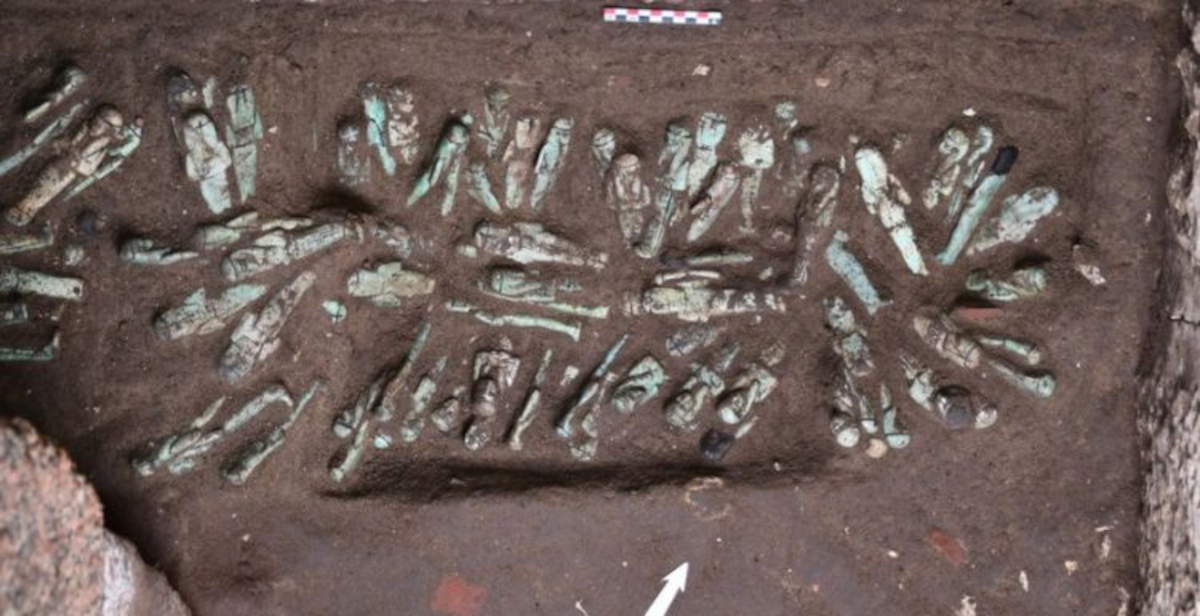The archaeological zone of San el-Hagar, ancient Tanis in Egypt, is back in the scientific spotlight thanks to a recent discovery by the French archaeological mission led by Frédéric Payraudeau ofSorbonne University. The discovery took place inside one of the famous royal tombs, known since the 1930s for the discovery of the so-called Tanis Treasures, now on display at the Egyptian Museum in Cairo. During activities to clean the floor of the northern chamber of the 22nd Dynasty tomb of Osorkon II, the mission identified a series of 225 funerary figurines (ushabti) attributed to King Sheshonq III, one of the most representative rulers of the same dynasty. The statuettes were found in their original context, submerged in layers of silt, near an inscriptionless granite sarcophagus previously identified but never assigned with certainty.
The secretary-general of the Supreme Council of Antiquities, Mohammad Ismail Khaled, called the discovery a remarkable milestone in research on the Tanis royal tombs, the most important since 1946. Indeed, the new evidence provides a crucial element in addressing an enigma that has remained unsolved for decades: according to the emerging data, the anonymous sarcophagus belongs to Sheshonq III. The attribution thus opens new perspectives on the funerary practices of the time and the possibility that the ruler was buried in Osorkon II’s tomb, or that the trousseau was later transferred for security reasons. Khaled also emphasized that the result is the result of ongoing collaboration between the French mission and the Egyptian side, drawing attention to the importance of continuing research and restoration work at a site that continues to show inexhaustible potential for knowledge of Third Intermediate Period Egypt.
According to Mohammed Abdel-Badie, director of the Department of Egyptian Antiquities, unpublished inscriptions have also emerged in the same environment, which are bound to offer new references on the development of royal burials and how they were used. Hesham Hussein, in charge of Lower Egyptian Antiquities, recalled that the French mission has been working in the area since 1929 as part of a historic partnership with the Supreme Council of Antiquities. The find is part of a preparatory phase for a project to protect the royal tomb, which includes installing a roof structure, reducing salts, and cleaning the interior and exterior architectural elements. Mission director Frédéric Payraudeau explained that the next phase of work will involve the detailed study of new inscriptions and the continuation of cleaning operations in the north chamber of Osorkon II’s tomb. Future activities aim to further clarify the circumstances of Sheshonq III’s deposition, something that remains undefined: indeed, it is not certain whether the king was buried directly in the tomb or whether his grave goods were transferred later to protect him from looting. Research will continue to provide more conclusive answers.



 |
| New discoveries at Tanis (Egypt): 225 ushabti and a riddle solved in the royal necropolis |
Warning: the translation into English of the original Italian article was created using automatic tools. We undertake to review all articles, but we do not guarantee the total absence of inaccuracies in the translation due to the program. You can find the original by clicking on the ITA button. If you find any mistake,please contact us.